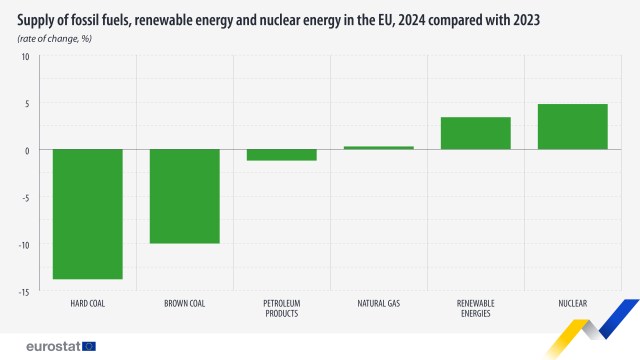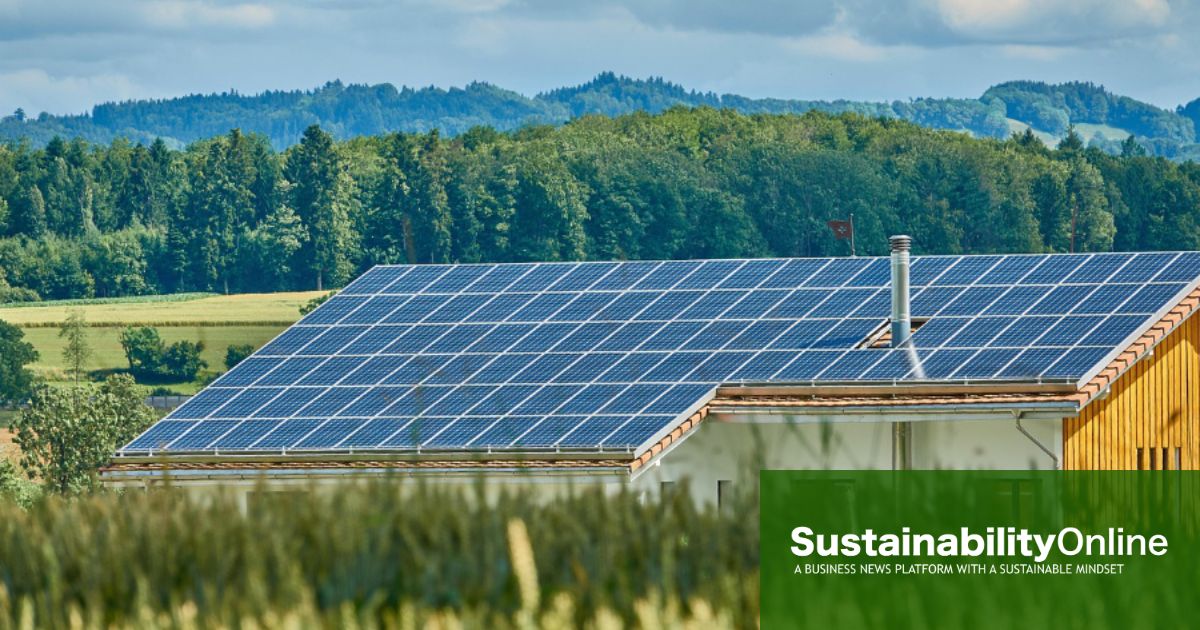The European Union saw a 3.4% increase in renewable energy supply last year, compared to 2023, to around 11.3 million terajoules, according to Eurostat data.
Renewables strengthened their position as the leading source of electricity in the EU last year, accounting for 47.3% of total electricity production.
This equates to a total generation of 1.31 million gigawatt-hours (kWh), a 7.7% increase on the previous year.
Fossil fuel electricity
At the same time, electricity from fossil fuels decreased, by 7.2% year-on-year, contributing 0.81 million GWh, or 29.2% of the bloc’s total electricity production.
Supply of brown coal fell by 10% to 199.3 million tonnes, while hard coal fell by 13.8% to 110.9 million tonnes – both hit their lowest levels since the data series began, according to Eurostat.
Supply of natural gas, meanwhile, showed a modest 0.3% increase, reaching 12.8 million terajoules, while oil and petroleum products reported a 1.2% decrease in supply, to 454 million tonnes.
Nuclear power saw its share of Europe’s electricity market increase, contributing 0.65 million gigawatt-hours or 23.4% of total electricity production. This is a 4.8% increase compared with 2023.
 RepowerEU Plan
RepowerEU Plan
The shift towards renewables in recent years has been driven by the RepowerEU Plan, which was implemented amid fears over the security of energy supply following the COVID-19 pandemic and Russia’s invasion of Ukraine.
‘The decisions taken in 2022 [when the RepowerEU Plan was launched] contributed to creating a significant positive impact on the EU’s energy supply in 2023, which saw a remarkable increase in renewable energy and a sharp drop in fossil fuels, in particular natural gas and coal,’ Eurostat noted. ‘According to preliminary data for 2024, these general trends continued – renewables remained on an upward trajectory, while coal continue decreasing. Natural gas supply was more or less stable compared to 2023.’ Read more here and here.
Like this:
Like Loading…
Related
